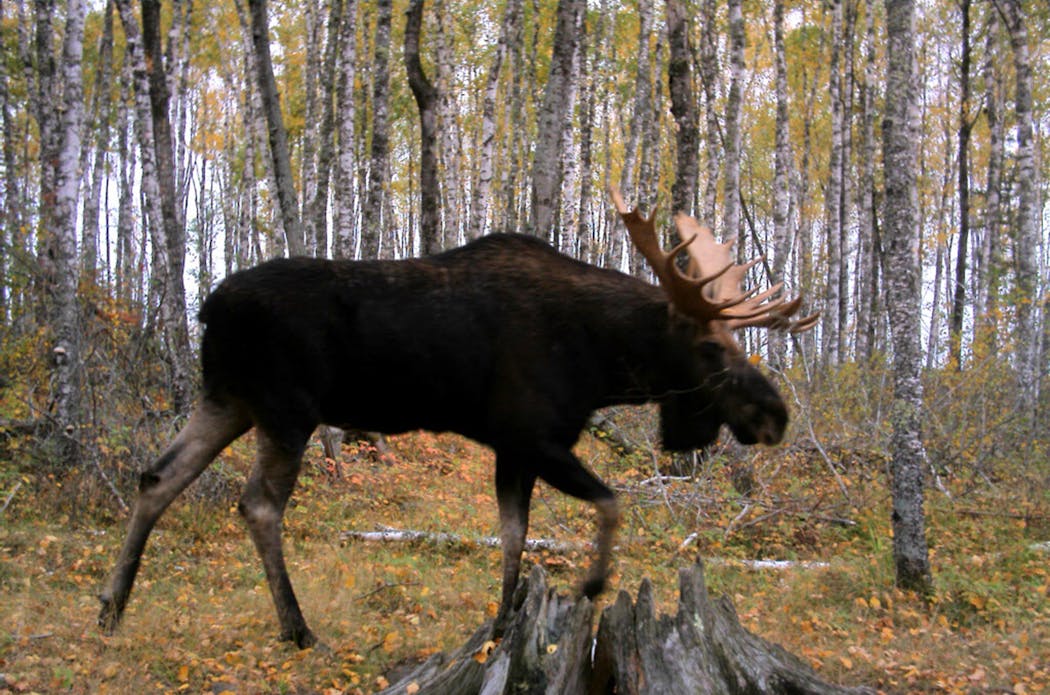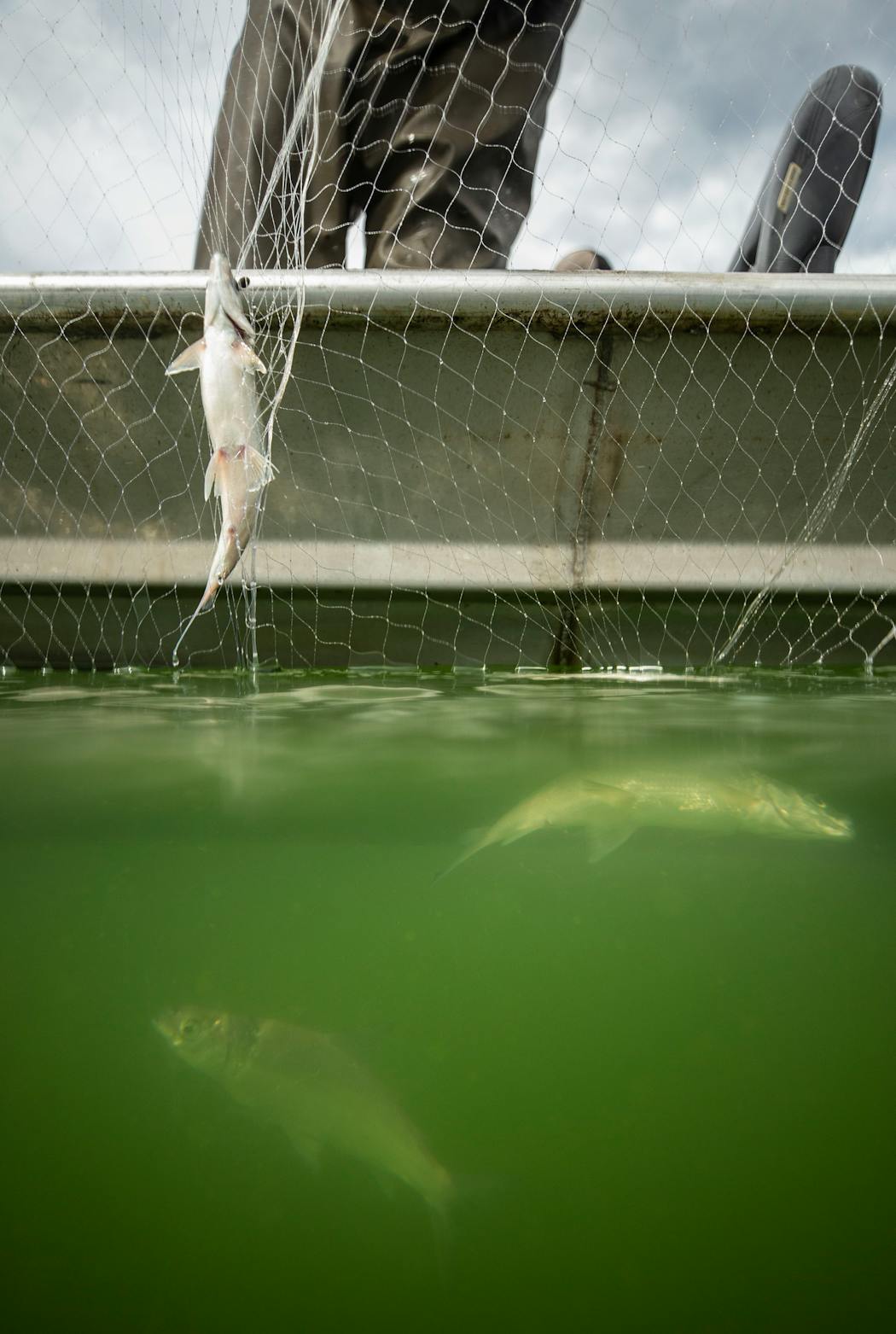The hottest year worldwide ever recorded — 2023 — is set to end warm, brown and dry in Minnesota. The state was spared the scorching heatwave that languished over much of the country all summer. But the warm front now blanketing Minnesota will leave its mark on our winter-adapted ecosystem.
Without a deep snowpack, deer likely will flourish. It will cause havoc for moose, however, and likely lead to more summertime algal blooms on lakes.
Spurred by a combination of global climate change and a strong El Nino, this December has a chance to end as the warmest in much of the state since tracking began in 1872, according to the state climatology office.
The average temperature has been about 9 degrees above normal in the Twin Cities and between 7 and 12 degrees hotter in Duluth, International Falls, Rochester and St. Cloud, said Kenny Blumenfeld, a climatologist for the Minnesota Department of Natural Resources' climatology office.
If the forecasts for even warmer, drier weather over the next week prove true, records will fall, he said.
Minnesota's mildest winters have almost all been during strong El Nino weather patterns. That's when a stretch of the Pacific Ocean about the size of the Midwest along the equator is hotter than normal. The energy from that heat drives a pattern that often, but not always, traps cold air about 1,000 miles north of Minnesota and pushes moisture about 1,000 miles south, Blumenfeld said.
"So we have this long-term trend toward warmer conditions caused by climate change and then this winter we have this huge spike in temperatures from a natural weather pattern," he said. "There's strong evidence that both pieces are at play here."
The brunt of climate change has hit Minnesota in the winter, and the increasingly short window for snow and ice has affected the state's wildlife, lakes and forests. Warm and dry weather means different things for different species and natural systems. Here's how a few of them will likely fare.
Moose
Warm winters have been brutal for moose. They have been under attack for years from a fatal brain parasite that has been creeping north and from winter ticks — a native species whose population explodes when there is no snow.
About 30% of moose in Minnesota died last year, with a winter tick infestation being a major cause, said Seth Moore, the director of biology and environment for the Grand Portage Band of Chippewa.
While the start to the winter hasn't been great for moose, the most important time for them will be in the late winter and early spring. Ticks live on the moose all winter, then fall off around April to lay eggs in the soil. If there is still snow on the ground when they drop, the vast majority of those ticks will drown. Their eggs won't hatch and only a small number will survive to bother moose in the coming year. But if the snow is gone by April and the ground is dry, as it increasingly has been, the ticks will flourish, Moore said.
They link up by the thousands and bury themselves in the moose's skin, where they engorge for the rest of the year. Infected females lose so much blood they may not have the energy to give birth or their calves may be too anemic to survive, scientists have found. Adult moose can become lethargic and more prone to predators or susceptible to disease.
Whitetail deer
Whitetail deer tend to thrive during warm and dry winters, said Tom Gable, lead scientist of the Voyageurs Wolf Project.
And the past two winters with deep snow in northern Minnesota have been tough on deer.
"We had snow up here that lasted into early May," he said. "That's when they're already zapped nutritionally from the winter, so if they don't have bare ground and they have to trudge through deep snow it can make them vulnerable."
Gable and his team of researchers trek dozens of miles through the woods every day during the spring and summer to record and study what wolves eat. Last spring, they came upon deer bones that had zero fat in the marrow, a strong sign that those deer had burned through fat reserves and were struggling for energy.
The natural world is far too complex to simply predict that a mild winter will cause the deer population to increase, Gable said. But it certainly won't hurt them.
Wolves
The inverse likely is true for wolves. Wolves struggle all summer to find prey, Gable said, when deer and moose are at their strongest and fastest. Deep snow slows deer down. Without it, wolves will have a more difficult time finding a meal this winter, he said.
But wolves are tough and adaptable. While they often are thought of as an archetypal northern species, they are as at home in a Mexican desert or a North Carolina swamp as they are in Minnesota's North Woods. Anything that is good for deer, will eventually be good for wolves, too.
Studies have shown for years that wolf populations rise and fall with that of their prey. If a few warm winters in a row cause the deer population to flourish, wolf numbers likely won't be far behind.
Lakes
Lakes across the state are freezing later and thawing earlier. And with temperatures struggling to stay below freezing even at night, this winter may be one of the more extreme cases in recent years. Minnesota and Wisconsin have been tracking ice coverage for more than a century, and the region is losing about four days of ice every 10 years, records show.
Some in southern Minnesota and central Wisconsin tend to remain open water about a month longer than they did in the late 1800s.
Those extra weeks of open water and sunlight are rapidly changing the life in the lakes. As more light penetrates a lake, more algae grows in the summer and eventually dies off, sucking away oxygen and forcing fish into a smaller and smaller livable space.
The effect is most clearly seen in the state's cisco population. Cisco are small white fish that live in cold, deep waters. They're an essential food source for walleye, lake trout, muskie and other predator fish. Loons have even learned to gather by the hundreds on cisco lakes, where they consume the oily fish to pack on energy before they migrate each fall, according to a study from the U.S. Geological Survey and Minnesota DNR.
With less ice coverage, cisco have disappeared from more than a dozen Minnesota lakes and have lost more than half their total population in the past 30 years, according to the DNR. As they die off, the entire food chain is disrupted.
Officials ID 2 shot dead in Lino Lakes. There have been 7 deaths in county under similar circumstances over past month.
Authorities investigate plane crash in northern Minnesota

Gun safety bills may hinge on one senator's fate despite House support, likely passage

Licensing for Minnesota recreation making major leap to digital age






